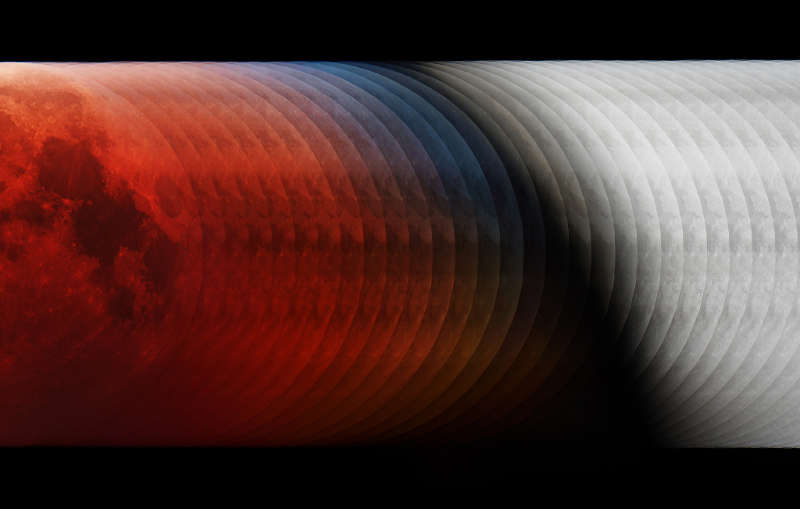Credit & Copyright: Laszlo Francsics
Explanation:
On January 21, 2019 moonwatchers on planet Earth saw a
total
lunar eclipse.
In 35 frames this composite image follows the Moon that night as
it crossed into
Earth's dark umbral shadow.
Taken 3 minutes apart, they almost melt together in a continuous screen
that captures the dark colors within the shadow itself and the northern
curve of the shadow's edge.
Sunlight scattered by the atmosphere into the shadow causes the
lunar surface to appear reddened during totality (left),
but close to the umbra's edge, the limb of the eclipsed Moon shows a
remarkable blue hue.
The blue eclipsed moonlight originates as rays of sunlight pass through layers
high in Earth's upper stratosphere, colored by ozone that scatters red light
and transmits blue.
The Moon's next crossing into Earth's umbral shadow, will be
on
May 26, 2021.
1999 2000 2001 2002 2003 2004 2005 2006 2007 2008 2009 2010 2011 2012 2013 2014 2015 2016 2017 2018 2019 2020 2021 2022 2023 2024 2025 |
Январь Февраль Март Апрель Май Июнь Июль Август Сентябрь Октябрь Ноябрь Декабрь |
NASA Web Site Statements, Warnings, and Disclaimers
NASA Official: Jay Norris. Specific rights apply.
A service of: LHEA at NASA / GSFC
& Michigan Tech. U.
|
Публикации с ключевыми словами:
total lunar eclipse - лунное затмение
Публикации со словами: total lunar eclipse - лунное затмение | |
См. также:
Все публикации на ту же тему >> | |
